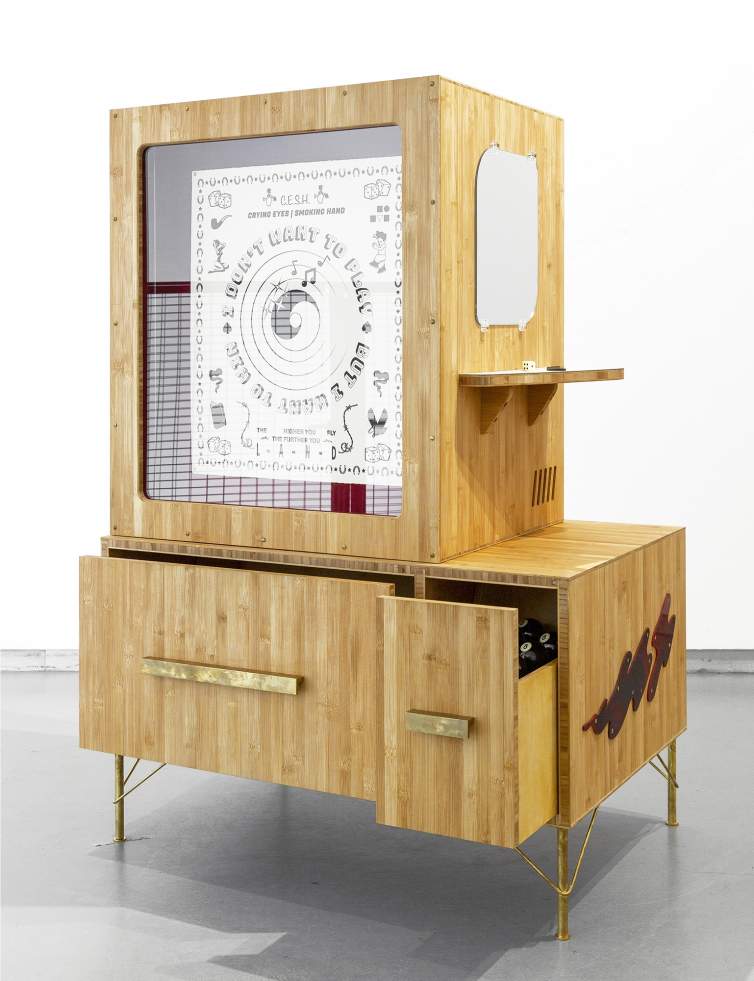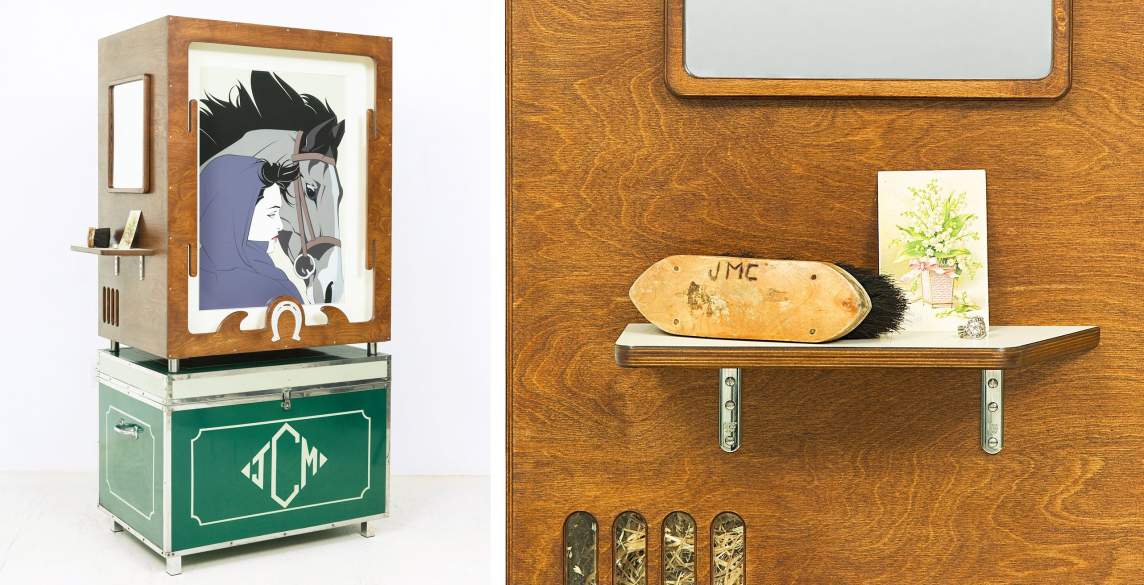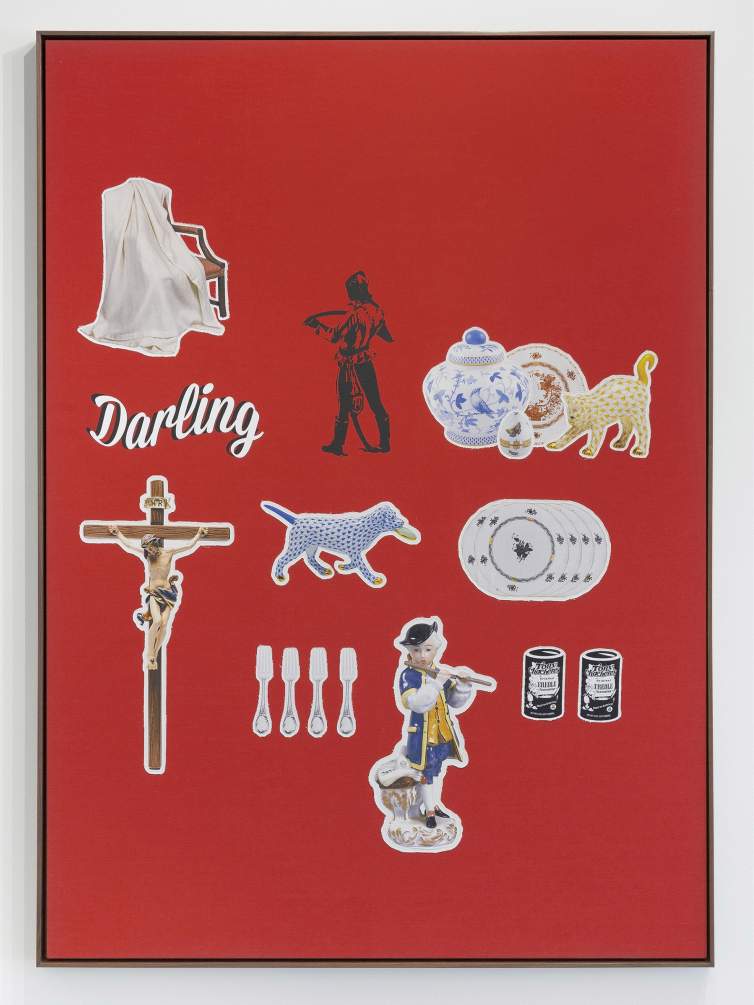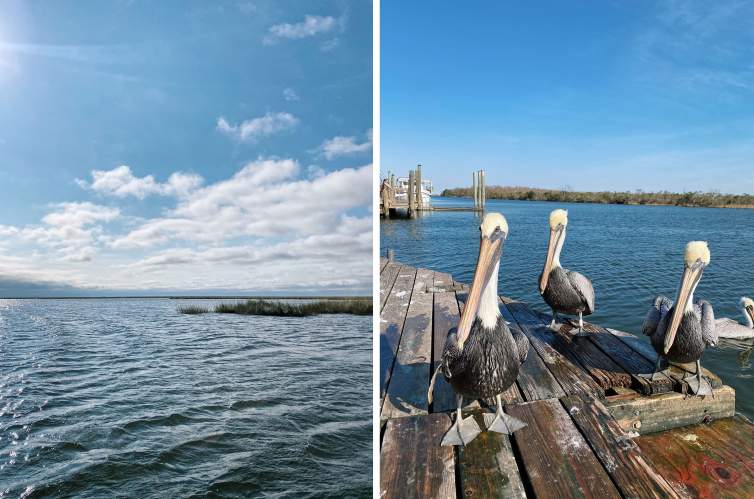In the Studio: Samira Abbassy
“My attempt in depicting the human form is almost like a psychic x-ray, so the n...

NH DePass is a New Orleans-based artist and Fall/Winter 2021 Artist-in-Residence at the Joan Mitchell Center. We interviewed him about his work and residency experience in December 2021. The following is an edited transcript of that conversation.
I work primarily in sculpture. I've traditionally built object-based sculptural units, sometimes bordering on furniture, and what has consumed my work for nearly the past three years has been this idea of a non-figurative portrait. The idea was to make a portrait of someone without showing their physical appearance—a portrait based on aesthetic preferences, objects, or the idiosyncrasies unique to that individual. In pursuit of this, I've worked on incorporating various framing devices into the sculptures to embed more information about the individual. Asking the question, how can I share this information and give someone clues into a world, or clues into an idea, without having to explicitly say it?

My work is “project-based,” so it can sometimes be difficult to talk about the broader scope of it, because it can be so specific to the individual project that I'm working on. I tend to work in series, and I feel like the relationships between different series are best traced back over time. After I’ve completed a few projects, I can then draw the parallels between them. I like working this way however, because it allows me to not have something predefined and say, oh, I'm a figurative painter. So, I need to approach this project as a figurative painting. I think it opens me up to ask the question, what would be the best execution of this project?

I recently came across an equestrian tack trunk at an estate sale in Mississippi, filled with all of this person’s horse riding equipment, with her initials on the front and everything. When I saw it, I thought I had to have it. It felt like there was an injustice happening, that this was being tossed out, and so casually given away. So naturally, I felt compelled to do something with it. Shortly after, from a different estate sale, I found this Patrick Nagel lithograph from the 1980’s of a lady and a horse.
I had one of those lightning flash moments—that's the lady and the horse, there's her trunk! I decided I was going to make a portrait of her with her horse chest, and break this print out of the frame and contextualize it, thus creating a portrait with these discarded items of someone I never met, giving it a life and a narrative and a story. An ode to this person in sculptural form, which not surprisingly turned out to be another portrait.

Not surprisingly, I did a “portrait” of my grandmother, and that marked a transition from the three-dimensional portraits into a newer series of two-dimensional works that introduce sewing and fabric. My grandmother originally taught me how to sew. So when I was approaching her portrait, I thought it would be fitting to make a textile-based piece. I envisioned a portrait of her as a cabinet that houses porcelain and different knickknacks she keeps—basically a shelf-like layout of objects.

That leads into the current series I'm working on, which is a collection of bumper stickers, but instead of being the conventional size—maybe two inches by eight inches—they're blown up to two feet by eight feet. I'm sewing them with laser-cut, marine fabric. I wanted to take something that's mass produced and mindlessly printed, such as a bumper sticker, and make it this hand-sewn, hand-produced object—totally the opposite of mass production.
I frequently go fishing with my brother, and I had been thinking about making work about fishing culture in south Louisiana. I zeroed in on the bumper sticker as a vector of conveying thought and idea. It's just such a prominent thing; you almost can't see a fishing truck or a pickup truck without a bumper sticker of some kind on it. Some are funny, some are offensive, some are…whatever they are, but there seems to be a need for people to express themselves through these little pieces of adhesive paper on their car. It's funny to me, and I do enjoy incorporating humor in the work. And so I thought, what if I took these little forms of expression—the bumper sticker—and I just blew them up in scale and color.

Where I go fishing with my brother is in Delacroix, Louisiana, and there's a road that leads down to the marina that ends at the water. They call it “the end of the world.” In thinking about this work, it was almost impossible for me to think about fishing there and not consider the reality that this land is literally disappearing before our eyes. Every time we go out after a big storm, there are open channels where there used to be marshland. I can't not think about the climate aspect when I'm thinking about fishing there.
I don't like to be preachy in my work; I like to open a conversation and let other people form their opinions, based on the information I'm putting forth—instead of telling someone how to feel. I feel like we get numb to the parade of bad news, so I thought about approaching the situation of Southeast Louisiana with a humorous, lighter, exhibition and series of works that could then open the door to talk about something more serious.
You can see NH DePass's work at Thierry Goldberg gallery and nhdepass.com.